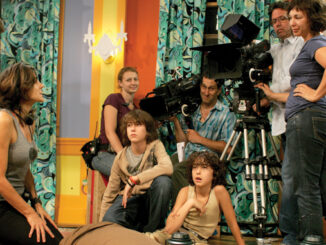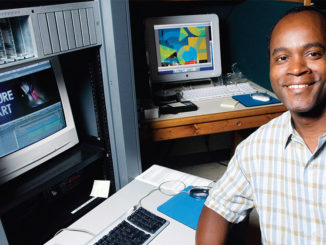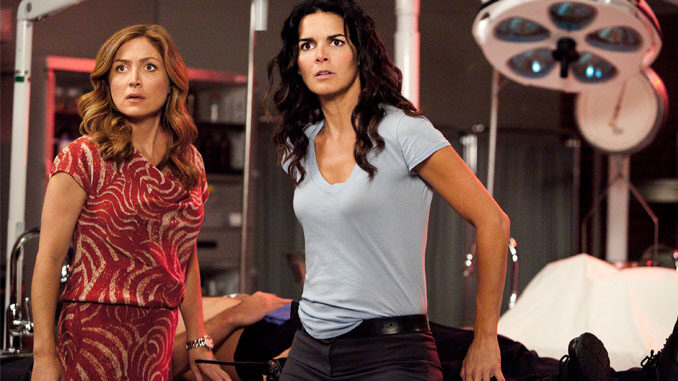
by Debra Kaufman • portraits by Martin Cohen
Since 2010, Rizzoli & Isles has been entertaining television audiences with the snappy banter between its two leads, Detective Jane Rizzoli (Angie Harmon) and Medical Examiner Dr. Maura Isles (Sasha Alexander), and the complex murder mysteries they solve.
The series, which is in its sixth season on the TNT cable network, is currently on hiatus but returns to TV after the first of the year. Created by Janet Tamaro and currently run by executive producer Jan Nash, Rizzoli & Isles is primarily about the relationship between the two lead characters, according to editor David Siegel, ACE, who says, “They are the heart and soul of the show.”
Housed on the Paramount Studios back lot, the series is produced on three permanent sound stages, using other stages as needed, as well as “areas of the lot that double as Boston,” explains Siegel, who, along with fellow editors Lance Luckey and Mark Strand, represent the heart and soul of the show’s post-production department, also based on the lot. They are ably supported by assistant editors Mike Baiocco, Aaron Campbell, Patrick Magee and Jon Otazua.

Luckey and his assistant Magee have been on Rizzoli & Isles since its first season. “We have known Mike Robin, the director of the pilot for many years,” says the editor. “He and I worked together in post-production on the first season of L.A. Law — Mike as post coordinator and me as assistant editor. He wanted me to work on Rizzoli & Isles, so I interviewed with Janet Tamaro. She liked that I had both comedy and drama experience as an editor because she wanted the series to straddle both those genres.” Siegel and Strand both joined the production at the beginning of Season 3; Strand also knew director Robin, with whom he had worked on FX’s Nip/Tuck.
Rizzoli & Isles started out as a Final Cut Pro 7 show, explains Luckey. “Owning the systems helped keep our post budget on target and allowed any savings to be put back in front of the lens,” he says. “But since we had no media share, the assistants had to make sure each system was a clone of the other, so we wouldn’t lose any mixes, visual effects, dailies, cuts and so on.” When Final Cut Pro 7 was no longer going to be supported by Apple — and FCP X “did not fit our needs” — editors Kaja Fehr and Strand suggested to co-producer Alfonso Delgado to switch to Avid and a shared media system.
“We were getting to a place where FCP needed to be upgraded, and Apple was transitioning to FCP X,” says Strand. “Everyone was going to have to learn the new FCP or go to Avid. I came from reality TV and had used ScriptSync a lot, which I found to be an invaluable resource.” ScriptSync, however, is not part of the latest version of Avid Media Composer.
All the editors agree that the show’s tone — a dramedy — sets it apart and makes it sometimes tricky to edit. “Since we are a drama and a comedy, we need to go back and forth in our storytelling styles” Luckey notes. “In the early years of the series, this especially applied when Rizzoli & Isles was a darker drama. It is a challenge to cut from a depraved murder scene and then make the joke at the end funny and not in bad taste. Because of these kinds of scene juxtapositions, Janet wanted to see several variations of scenes, wanting the best drama/comedy effect. This could be challenging, but when the transition worked, it was rewarding.”
As the series progressed, it became obvious that the strength of the show was the relationship and comedic interplay of the lead namesake characters, according to Luckey. “With that realization, the show’s focus still centered on the murder and solving it, but the editing started to lean more toward comedy,” he explains. “This meant more dialogue on camera and very close attention to pacing — so that the timing is just right and the fullest effect of the joke is realized. The transition between drama and comedy, while still present, no longer had the sharp edges it did in the early years.”
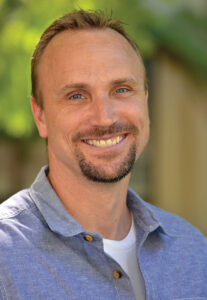
When Nash took over as showrunner in the fifth season, she was “looking for ways to shake it up and put a little spin on the series,” as Luckey puts it, adding, “For post, that meant shifting the editing toward the drama style and focusing on new interpersonal relationships with all the characters.”
Regardless of which direction the tone tilts, Siegel still finds the challenge with Rizzoli & Isles continues to be finding that balance between the dramatic moments and comic ones. “Playing the beats that keep it all real, while maintaining a sense of fun; that is key,” he says. The editor notes that the discussion begins with a production and tone meeting for each episode, attended by Nash and executive producers Gregory Prange and Kevin Cremin, as well as the writer, editor, cinematographer and post- production team.
All three editors point out the important role that composer Jimmy Levine has had on the series. “We’ve been using Jimmy since the beginning of the series, and he’s a big part of the editing style and tone of the show,” says Strand, who notes that when Nash took over as showrunner, she also asked for musical changes. “Jimmy was asked to change the music a little with different instrumentation in the comedy scenes and our new emotional focus,” explains Luckey. “This was the first time I had the opportunity to ask a composer to help us with custom cues during the editing process, which is really beneficial.”
The show’s workflow also sets it apart, says Siegel. “One of the great things about shooting and editing in Los Angeles, and on the same location at Paramount Studios, is that the lines of communication are kept open between all departments,” he says. “I can walk to the set and have a conversation with the director about the dailies that I’m cutting. It’s a great benefit to be able to become familiar with the entire cast and crew, including actors, producers, writers, directors of photography, sound recordist, Steadicam operator… all the way to craft services. This not only makes for a better show but for a much more enjoyable working environment.”
At the end of each shooting day, the camera cards are sent from production on the Paramount lot to dailies colorist John Heitmann at NBCUniversal Studio Post Facility. Siegel notes how important it is to know if production is going to be late or if a camera is different than the production’s ARRI Alexas was used. “We need to communicate with John regarding any special timing instructions or specific needs,” he says. “He sends out screen grabs to the DPs and to post to show what the material looks like outside of the DNX Avid Compression, to ensure we have a better idea of what the footage looks like from his SMPTE Monitor-calibrated system.” This information is also passed on to the final colorist, to give him a heads up on what the cinematographers, post personnel and producers are looking for, and an idea of the color palette for the final color correction.

“If we’re shooting a particularly long day, then we will ship the cards when the production breaks for lunch and process this footage first, to get a jump on things,” says Siegel. “We have a walkie-talkie with a live feed set in the post bungalow where we edit, so we can monitor the shooting crew and production.”
Dailies are usually ready for pickup at 8 o’clock each morning, and the post PA delivers them to the assistant editors with camera reports, sound reports, dailies logs and transfer reports. Picture and sound have already been synched and digitized for the Avid with the DNX 36 Codec. “That allows us to use as little storage space as possible, while keeping image quality high,” explains Siegel.
Producers and studio/network executives watch dailies uploaded on DAX. Once they’ve verified that all the dailies have been properly transferred, editorial notifies the camera department so they can re-use the camera cards. “The lined script pages are sent by the script supervisor at the end of the shooting day,” adds Siegel. “They use a program that gives editorial computer-generated notes — a more efficient system with less chance for delays.”
Since Rizzoli & Isles takes place in Boston, shots are often enhanced to include that city’s skyline, according to Siegel. “Although production tries to shoot around them, we also have palm trees that need to be removed, and numerous monitors in the Boston Police Department set that need to be composited with elements after the scene is shot,” he says. Co-producer Eve Watterson supplies the material for the monitors, and the editors and assistants prepare a reference QuickTime so they can begin tracking the footage and prepare for the final effects. “In this manner, the editors receive a temp version that will look close to the final for a studio and network cut,” Siegel explains.
Once the episode is locked, editorial provides a QuickTime to familiarize re-recording mixers Joe DeAngelis and Ken Kobett, CAS, and supervising sound editor Robb Navrides, at Technicolor Sound on the Paramount lot, with the show. “We discuss each episode in detail at a sound and music spotting session,” says Siegel. “Any added lines are temp’d in by the post team in order to not only facilitate the locking, but to serve as a template for the final dub.”
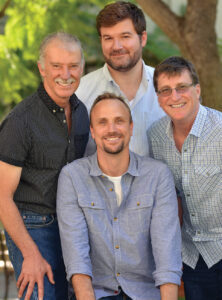
Composer Levine and music editor Robbie Adams have received each version of the cut — from editor’s cut to director and producer’s cut, studio and network cut, and, finally, locked picture — which means they have already turned in most of the final music by the time the team is spotting music. “This allows the editors and producers to give notes on the composed score sooner than on many other shows,” reports Siegel.
Each episode is mixed for two days; playback is the afternoon of the second day and, in addition to the editor and writer, producers Nash and Prange give notes, which the mixers address before the final layback. “Having the sound facilities and Technicolor team immediately available to us is a big advantage,” explains Siegel. “Additionally, being able to get the actors to and from the shooting stages to the ADR stage saves time and money and allows us to do so without any interruption to the shooting crew, often between scenes and set-ups. Our sound mixer on set, Todd Overton, has always done a marvelous job, along with the Technicolor team, so ADR is minimal compared to other shows.” NBCUniversal Studio Post creates the final air file; the post producers address any last-minute fixes.
Another way that Rizzoli & Isles stands out is the supportive atmosphere for assistants to move up. “This is a spring/summer-run show,” says Luckey. “As we approach wrap dates, the executives have all been supportive of crewmembers taking fall jobs to stay employed year round. This reality opens up opportunities for assistants to move up to cut, and other editors to come in for an episode or two before the seasons wraps.” Among the other “strong editors on the staff,” Luckey mentions Phil Neel, Russell Denove, Regis Kimble, Keith Henderson and Troy Takaki, ACE, and other assistants, including Adam Tiller, Oscar Lozoya and Angie Luckey.
And although it’s usually cinematographers who get a chance to direct, on Rizzoli & Isles this year, Strand got an opportunity to direct Episode 16, due to air in February 2016. “I was fortunate enough to direct an episode this year,” he says. “It’s incredibly exciting. I wouldn’t have been able to do it if I didn’t have access to the set and crew, and was able to walk over to communicate with them and develop a good relationship. People were very comfortable with me because of that. It’s nice to be in a broader family of an entire crew rather than being part of a satellite crew.”
Luckey agrees. “Shows that run this long are a rarity,” he says. “And I have enjoyed being with Rizzoli & Isles from the start. The cast and crew are all responsible for its success.”




